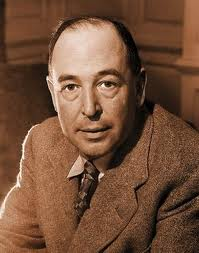C. S. Lewis traces his conversion story through his autobiography “Surprised by Joy” from his early childhood through to his conversion to Christ as an adult. As the story unfolds, he traces the “aesthetic experience” of “joy” as an experience that “was valuable only as a pointer to something other and outer.”
Early in his life, he speaks of a “religious experience”, which is followed by his becoming an “effective believer”, by which he means he “heard the doctrines of Christianity…” and “had no skepticism”. This resulted in a fear for his soul to the effect that he “began seriously to pray and read [his] bible and to attempt to obey [his] conscience.” At this stage, Lewis’s faith is a simple faith, which does not understand how to comprehend and consider the world. Furthermore, it seems it bore a fear of God, but not an explicit understanding of his own sin and in this sense, he did not feel a sense of personal responsibility before God, which comes much later.
The fragility of his new found belief is demonstrated as he encounters the waywardness of Miss C. who herself was still “hunting… for a truth and a way of life”. The influence of Miss C. led him to consider that the “visible world might only be a curtain to conceal huge realms uncharged by my very simple theology.” It was at this point that her conversation “loosened the whole framework” of his belief.
For Christian parents, this highlights the responsibility of actively preparing our children to encounter the multiple beliefs and theories around us from a Christian perspective. Our children run into the same battle we are in, we ought to prepare them to fight along side us.From this point, Lewis begins to abandon his romanticism and his belief in the metaphysical, attempting instead to put on the clothing of the realist, a stage he called “the new look” which sounds much like modern atheism. Lewis notes that, “realism satisfied an emotional need.” The emotions are extra-sensory, so if we are to be empiricists and consistent we mustn’t hold on to the emotional too tightly as logic and reason is king. Hence, there is thick irony in the notion that realism satisfied an emotional need for Lewis.
Lewis’s atheism begins, of course to break down, bit by bit. It begins with “the new quality, the bright shadow,” which he recognizes later as Holiness followed by the Christian influence of Chesterton , Johnson , the influence of the dirty old tragic Irishman and the mad man, and the influence of psychology as well as the conversion of his close friends Harwood and Barfield to the Anthroposophist thinking of Rudolf Steiner. Barfield’s conversion is particularly important as Barfield’s thinking challenged Lewis to let go of his “uncritical acceptance of the intellectual climate” and the epistemological inconsistencies associated with atheistic empiricism (and hence realism) . Both these steps were necessary for Lewis to move away from a naturalistic position to a super-naturalist position.
The role of Christian authors was particularly important in his conversion. He says of non-Christian writings that they “all seemed a little thin; what as boys we called ‘tinny’… There seemed to be no depth in them. They were too simple. The roughness and density of life did not appear in their books.” This exemplifies the importance of the involvement of Christians in every aspect of life including literature, through which their world-view was exposed and shown to be far more adept at encompassing the breadth of human experience. Tiny as this contribution may be, for Lewis it was very real.
